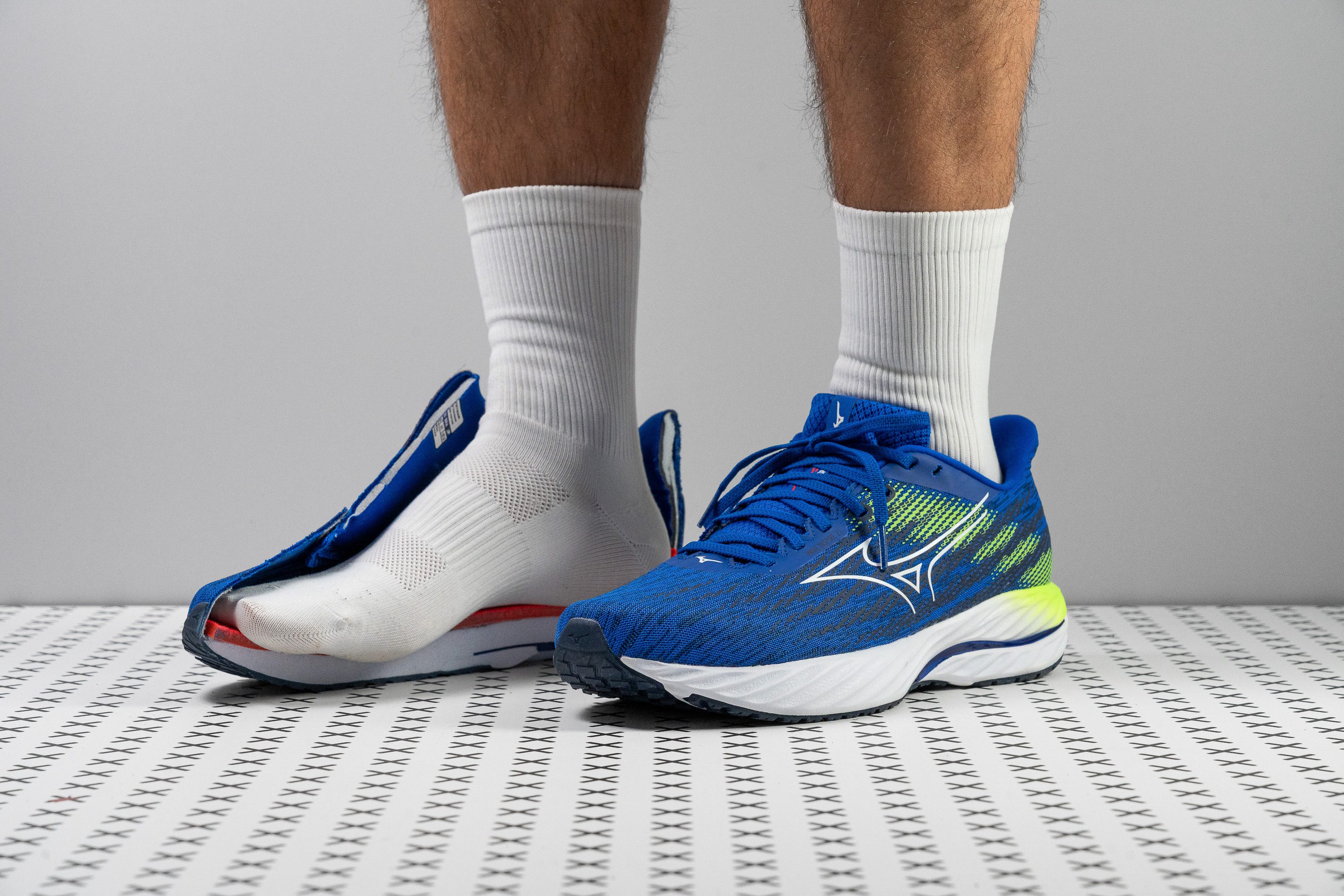Our verdict
- Top pick in best Mizuno running shoes
Pros
- Great choice for heel strikers
- Stable but flexible too
- Now features Enerzy NXT foam
- Durable outsole
- Good fit with gusseted tongue
- Wide platform for secure landings
- Great for everyday wear
- Fairly priced
- Weighs less than v20
Cons
- But still feels a bit heavy...
- Sky-high drop not for everyone
- Subpar airflow in hot weather
- Foam doesn't have much bounce
Audience verdict
- Top 26% in stability running shoes
- Top 25% in running shoes for flat feet
Comparison
The most similar running shoes compared
+ + Add a shoe | |||||
|---|---|---|---|---|---|
| Audience score | 87 Great! | 85 Good! | 78 Decent! | 83 Good! | |
| Price | $140 | $140 | $165 | $145 | |
| Pace | Daily running | Daily running | Daily running | Daily running | |
| Arch support | Stability | Stability | Stability | Stability | |
| Weight lab Weight brand | 10.1 oz / 286g 4.9 oz / 140g | 10.3 oz / 291g 10 oz / 283g | 10.8 oz / 305g 10.7 oz / 303g | 10.4 oz / 296g 10.5 oz / 298g | |
| Drop lab Drop brand | 12.9 mm 12.0 mm | 13.5 mm 12.0 mm | 10.1 mm 10.0 mm | 10.1 mm 10.0 mm | |
| Strike pattern | Heel | Heel | Heel | Heel | |
| Size | True to size | Slightly small | True to size | Slightly small | |
| Midsole softness | Balanced | Balanced | Balanced | Soft | |
| Difference in midsole softness in cold | Small | Small | Normal | Small | |
| Toebox durability | Decent | Decent | Decent | Decent | |
| Heel padding durability | Good | Good | Good | Good | |
| Outsole durability | Good | Good | Good | Good | |
| Breathability | Moderate | Moderate | Breathable | Moderate | |
| Width / fit | Wide | Medium | Medium | Medium | |
| Toebox width | Medium | Medium | Medium | Medium | |
| Stiffness | Moderate | Moderate | Moderate | Moderate | |
| Torsional rigidity | Moderate | Stiff | Stiff | Stiff | |
| Heel counter stiffness | Stiff | Stiff | Moderate | Moderate | |
| Heel lab Heel brand | 38.0 mm 38.0 mm | 39.0 mm 39.0 mm | 37.8 mm 39.0 mm | 36.1 mm 38.0 mm | |
| Forefoot lab Forefoot brand | 25.1 mm 26.0 mm | 25.5 mm 27.0 mm | 27.7 mm 29.0 mm | 26.0 mm 28.0 mm | |
| Widths available | NormalWide | NarrowNormalWideX-Wide | NormalWideX-Wide | NormalWideX-Wide | |
| Orthotic friendly | ✓ | ✓ | ✓ | ✓ | |
| Season | All seasons | All seasons | SummerAll seasons | All seasons | |
| Removable insole | ✓ | ✓ | ✓ | ✓ | |
| Ranking | #168 Top 46% | #213 Bottom 42% | #322 Bottom 12% | #252 Bottom 31% | |
| Popularity | #180 Top 49% | #5 Top 2% | #44 Top 12% | #56 Top 16% |
Who should buy
We enjoyed testing the Wave Inspire 21 and recommend it for:
- Runners who liked the previous version—it keeps the same ride with a better midsole.
- Heel strikers needing stability without a stiff, clunky feel and who value full outsole coverage.
- Those wanting more support than average daily trainers without going for overbuilt shoes.

Who should NOT buy
We think the Wave Inspire 21 isn’t the best option for runners with a midfoot or forefoot strike. Its sky-high 12.7 mm drop favors heavy heel landings and works against a forward-leaning stride. Based on our findings, we believe models like the Saucony Guide 17 or Altra Paradigm 7 are far better suited for those with a different footstrike pattern.
Weight is another drawback we noted in the lab. For a smoother, faster and less bulky ride, we recommend exploring the Brooks Hyperion GTS 2 or the Hoka Rincon 4.
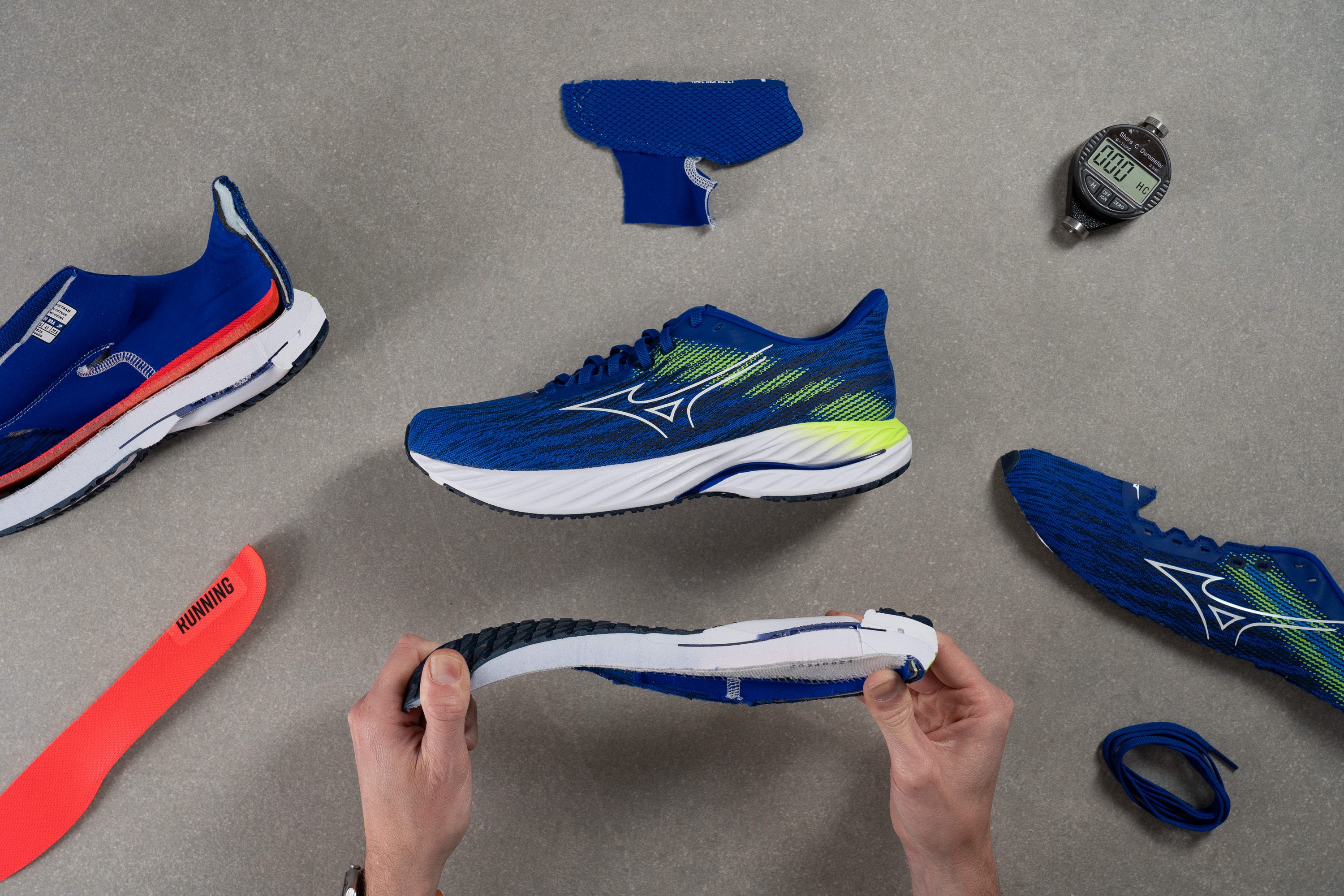
Cushioning
Shock absorption
The Wave Inspire 21 delivers 126 SA in the heel and just 99 SA in the forefoot, clearly reflecting its high-drop design that favors heel strikers.

| Wave Inspire 21 | 126 SA |
| Average | 129 SA |
Energy return
We pushed Mizuno to boost energy return, since version 20 really underperformed in that area. And they... somewhat delivered with the new Enerzy NXT foam. It now hits 53.3%, which is a clear step up from before, but still below average and far from an energetic ride.
| Wave Inspire 21 | 53.3% |
| Average | 58.6% |
Heel stack
With a 38.0 mm heel stack, the Wave Inspire 21 continues to grow closer to the 40-mm threshold—offering generous joint protection for heel strikers, who remain the primary focus of this stability-oriented shoe.
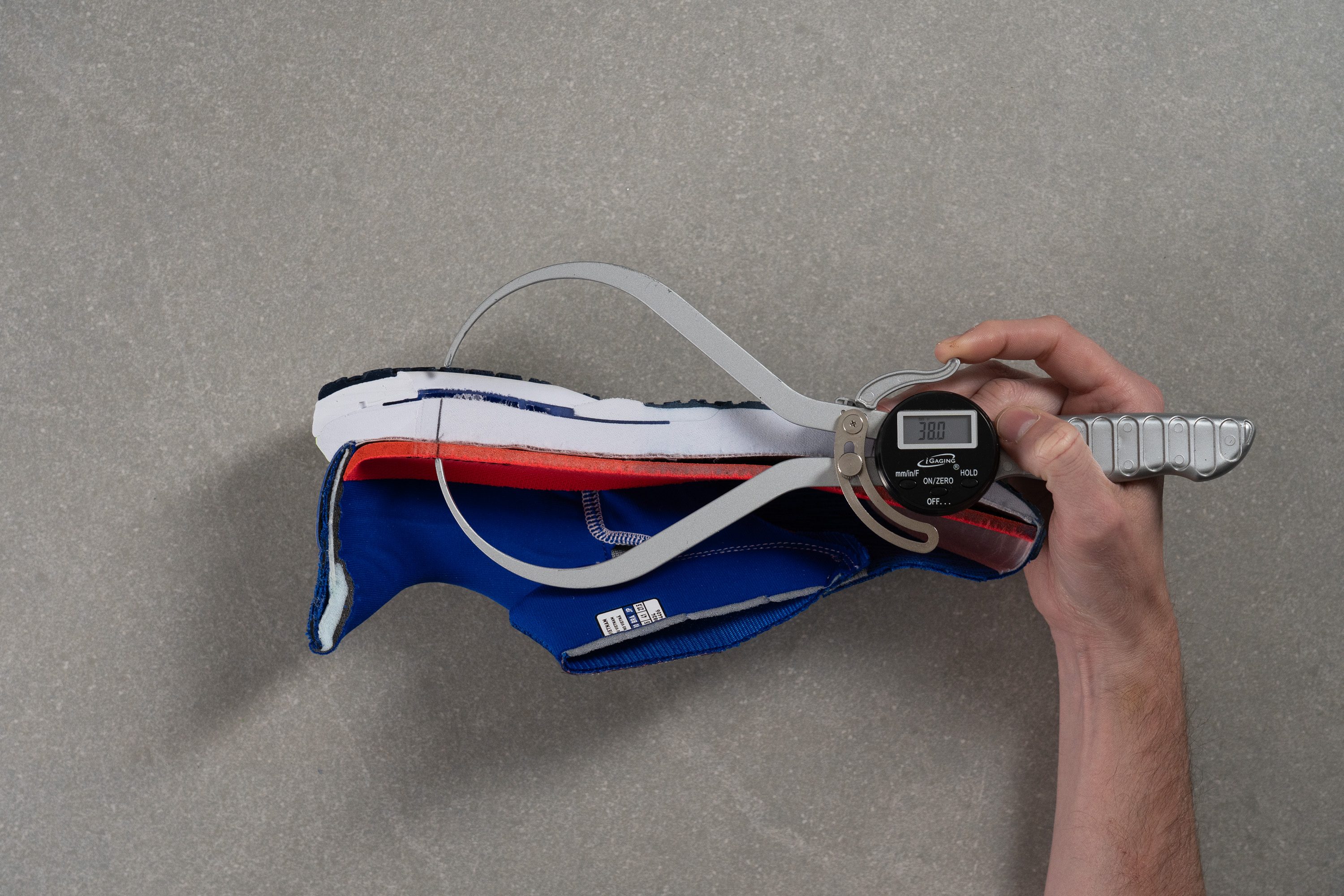
| Wave Inspire 21 | 38.0 mm |
| Average | 34.8 mm |
Forefoot stack
The forefoot measures 25.1 mm, identical to what we found in the Wave Inspire 20 here in the lab. It offers enough foam to handle most runs and falls right in line with what we expect from a road daily trainer.
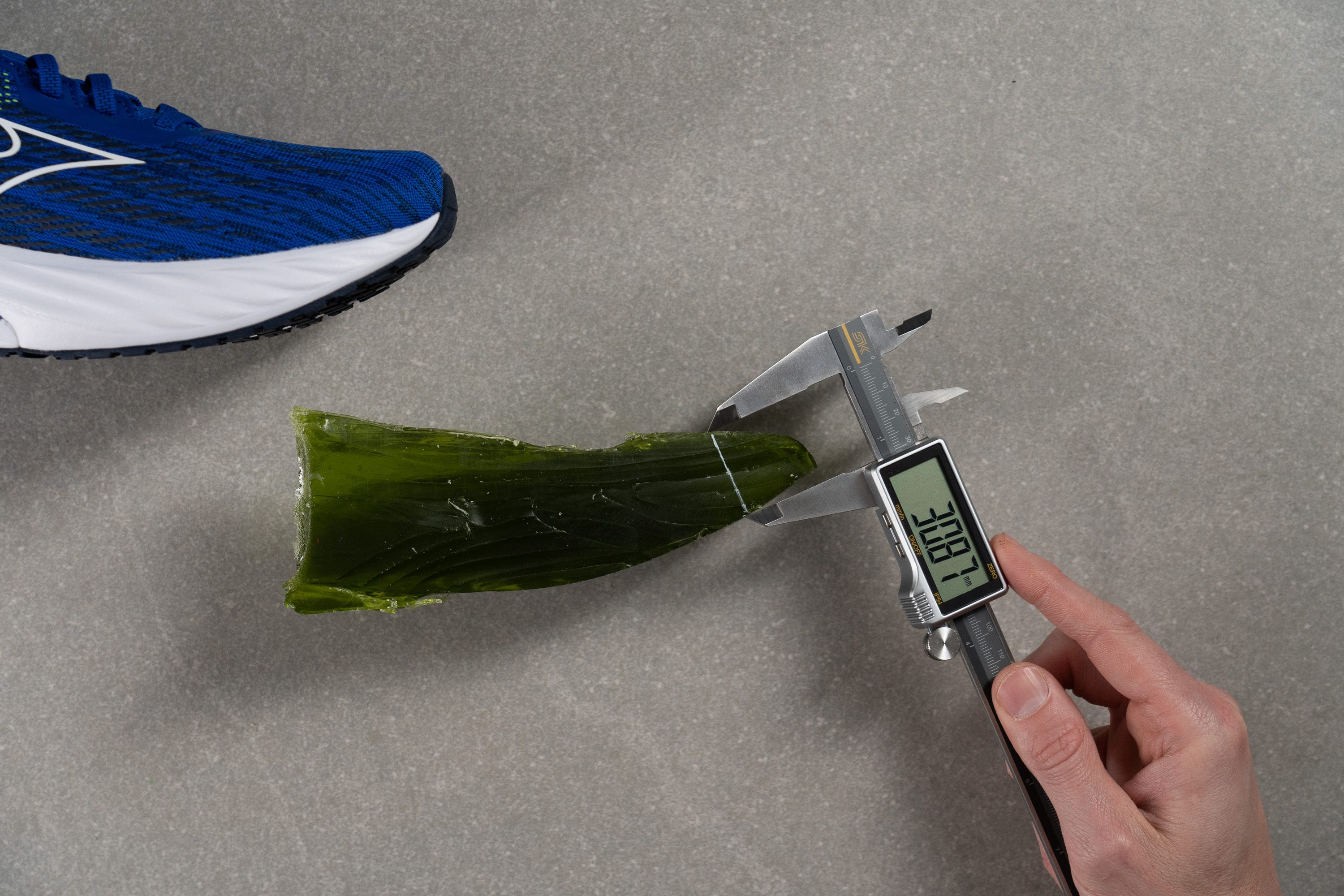
| Wave Inspire 21 | 25.1 mm |
| Average | 26.1 mm |
Drop
The Wave Inspire 21 sticks to the formula of its predecessor with a massive 12.9 mm drop. In our view, it's a shoe clearly designed for heel strikers or those who benefit from this kind of high-offset, less-natural geometry.
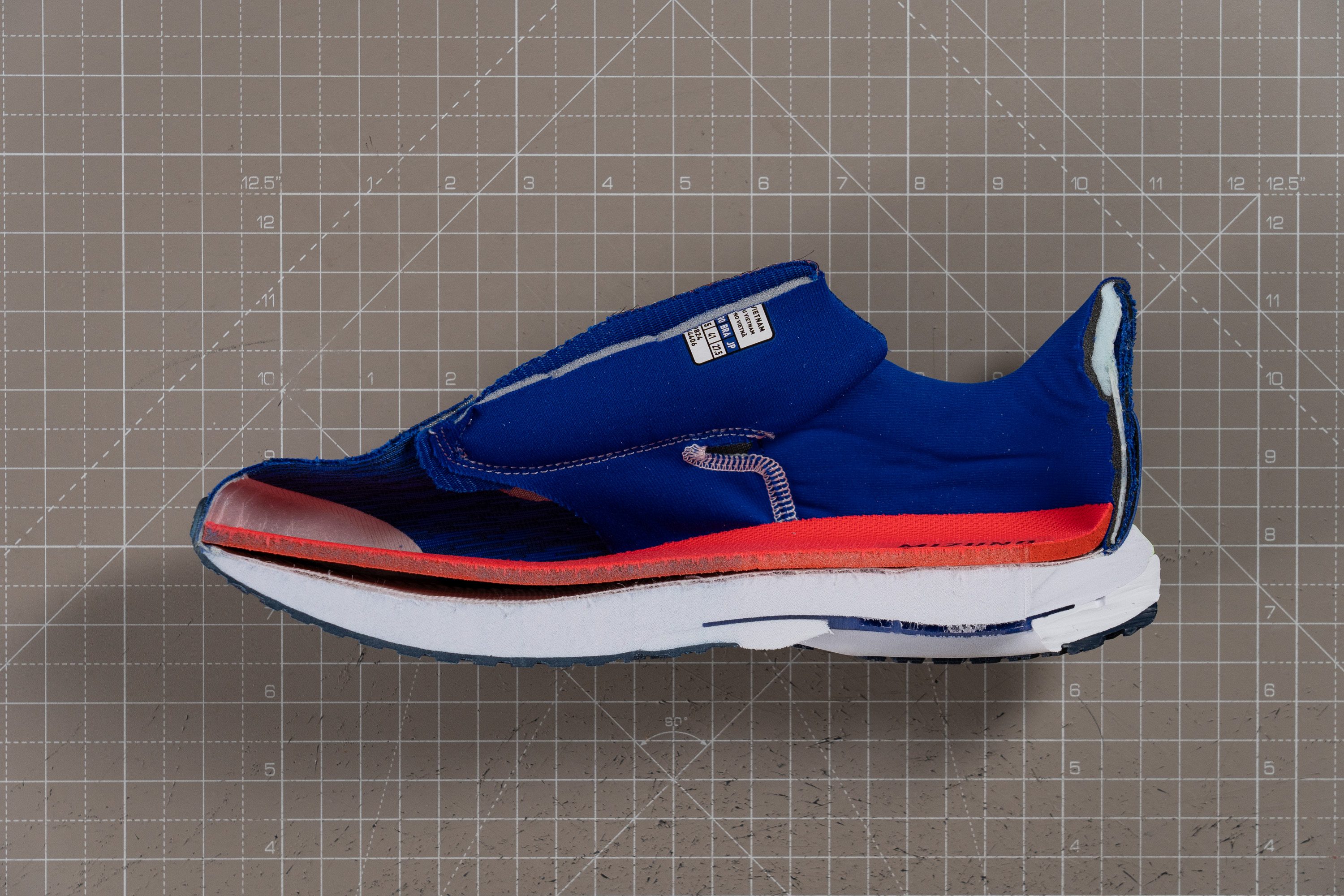
| Wave Inspire 21 | 12.9 mm |
| Average | 8.6 mm |
Midsole softness
Now to the midsole. The Wave Inspire 21 comes with a dual-foam setup combining Enerzy and Enerzy NXT.
Enerzy is Mizuno’s older, durability-focused foam that feels a bit flat underfoot, while Enerzy NXT is a fresh-and-snappy upgrade that we’ve already tested (and loved) in models like the Neo Vista. We measured the Enerzy layer at a firm 26.6 HA, which fits the shoe’s goal of providing a steady-and-controlled ride rather than cloud-soft landings.
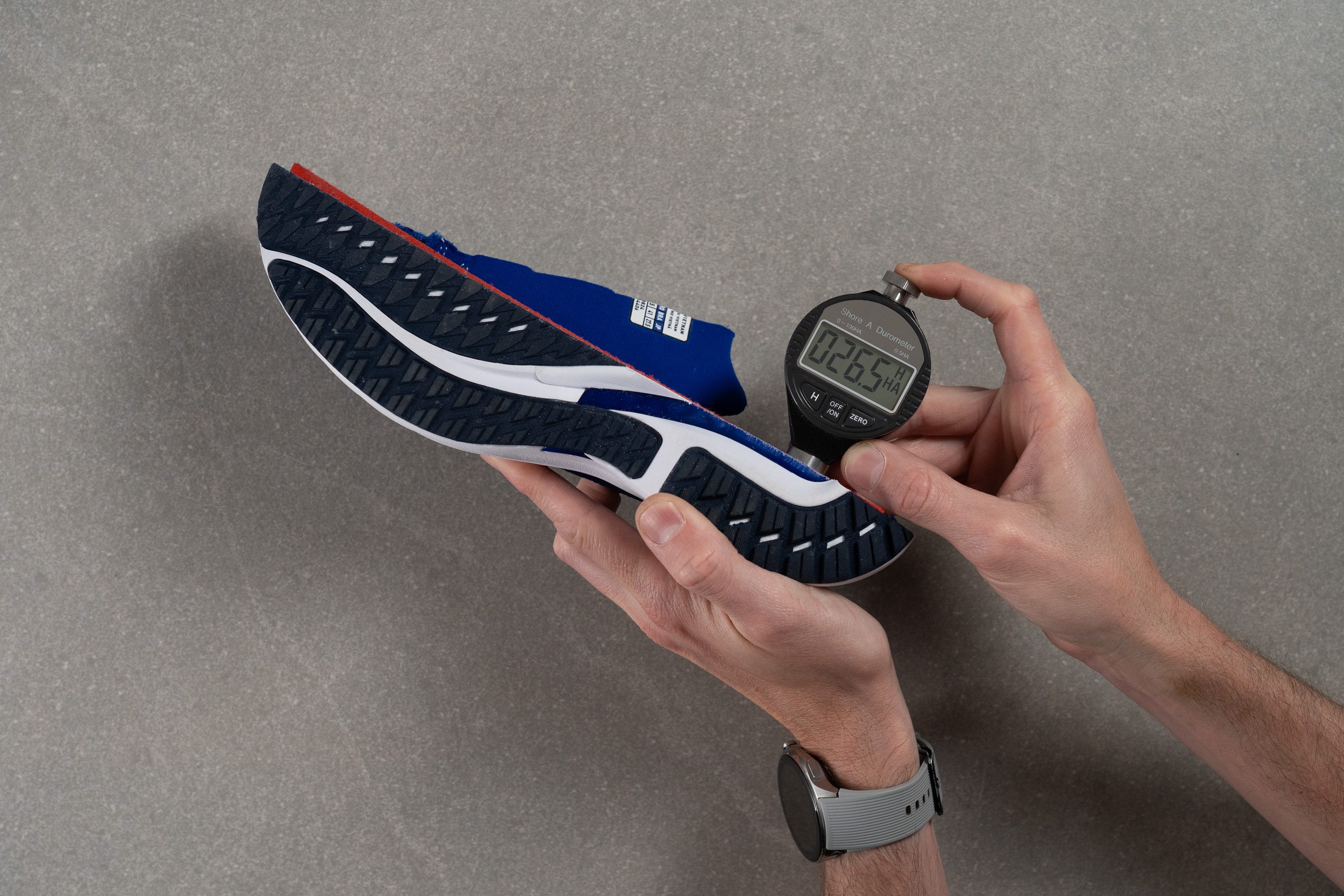
| Wave Inspire 21 | 26.6 HA |
| Average | 20.4 HA |
Secondary foam softness
The secondary foam is the one that hits the ground first and is a variation of Enerzy NXT that's also adjusted to boost stability and limit side-to-side movement. We measured it at 19.3 HA, which adds a touch of plushness, though the ride still feels on the firmer end.
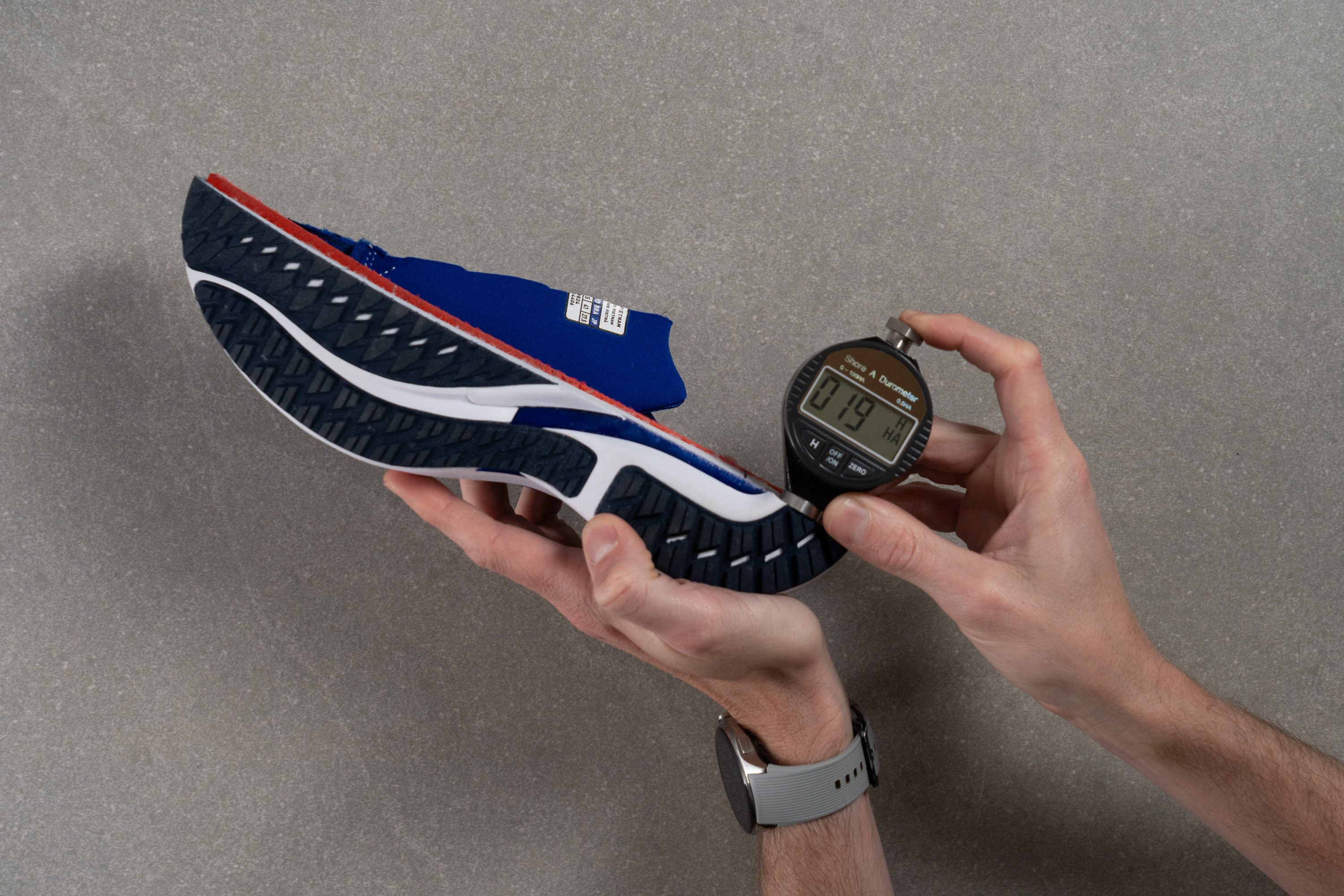
| Wave Inspire 21 | 19.3 HA |
| Average | 22.6 HA |
Rocker
We discovered that the Mizuno Wave Inspire 21 stays true to its heritage by skipping an aggressive heel bevel or forefoot rocker, something we truly value in a market crowded with rockered running shoes.
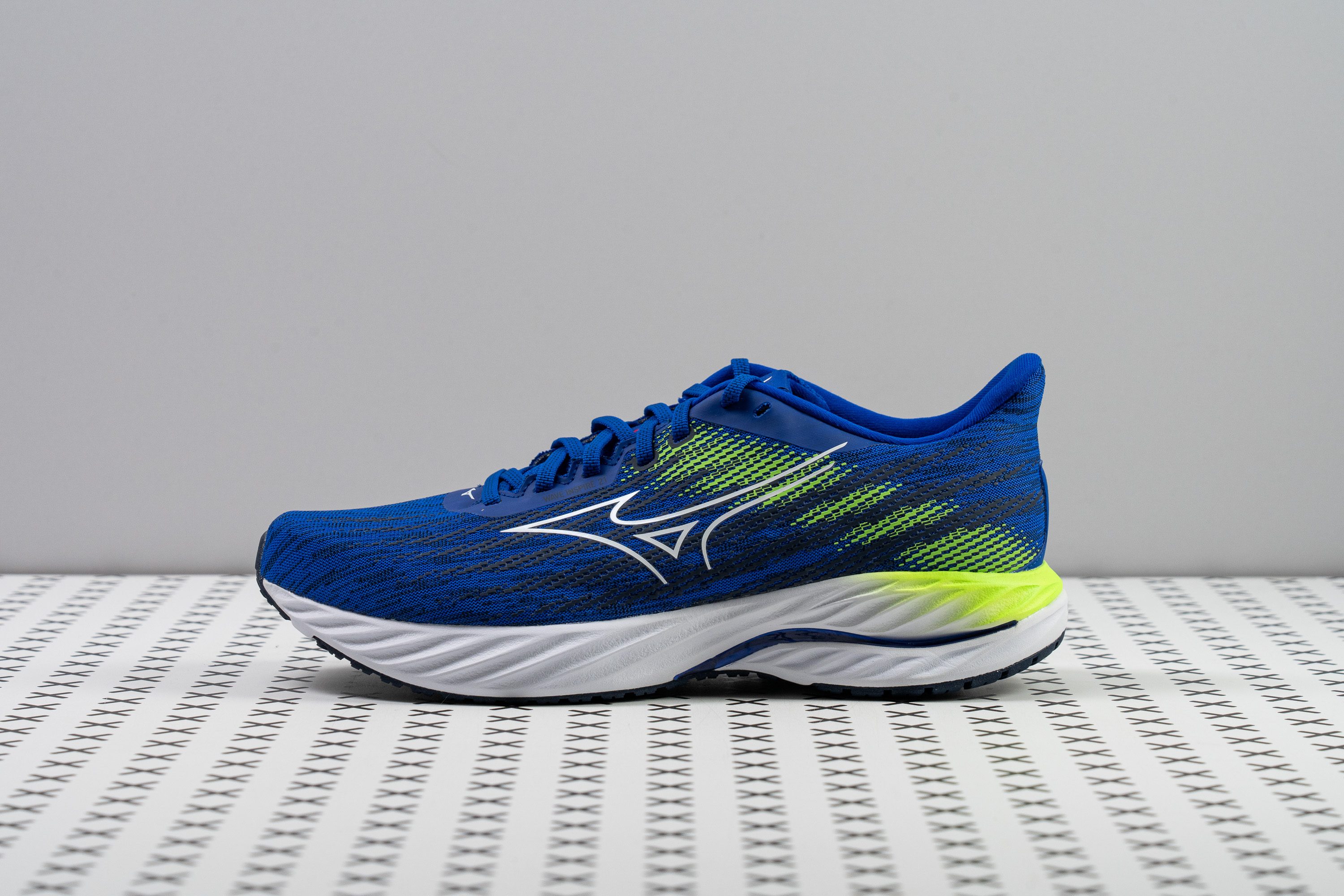
Both curvatures are modest and non-intrusive, letting the high-drop geometry do the forward-driving work for heel strikers.
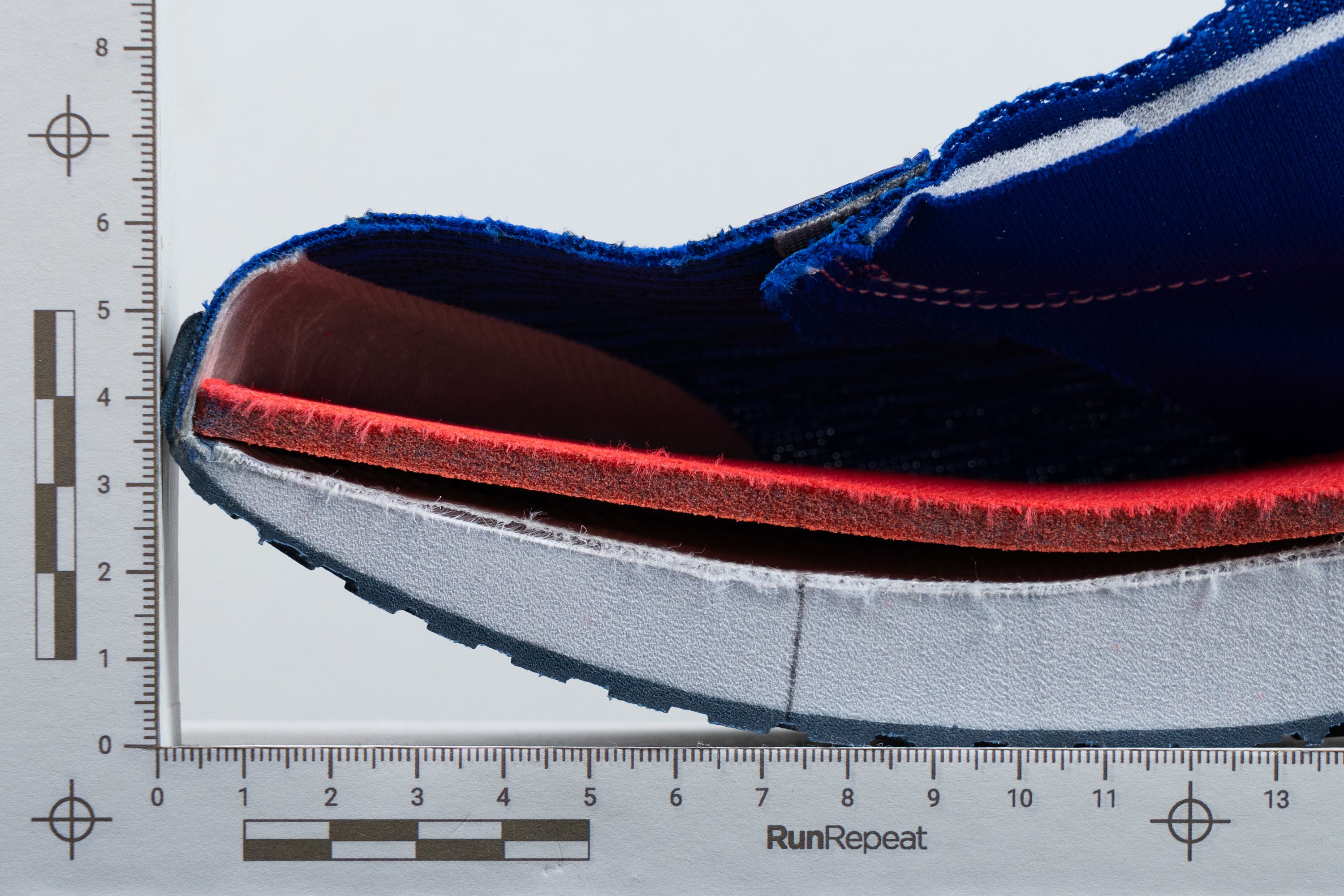
Plate
The Wave Inspire 21 sticks to its signature setup with a partial plate tucked in the heel to control landings in that zone. It's one more reason why we're certain this shoe is made for rearfoot strikers.
We will also use this photo to show the deep lateral decoupling groove in the heel, which allows the rearfoot to compress independently and improves torsional flexibility too. Paired with the Wave Plate, it balances impact control with a stable, well-cushioned ride.
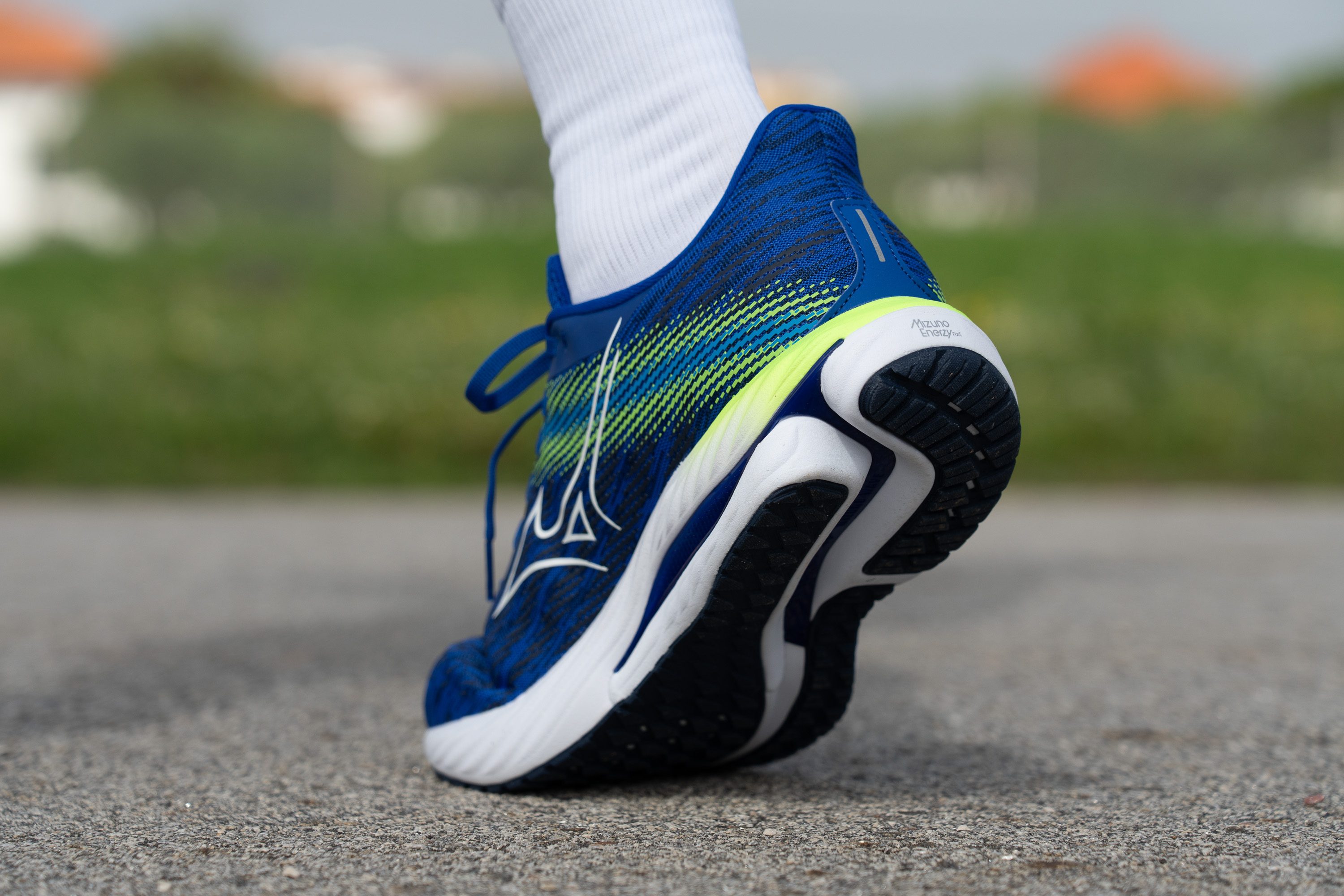
Size and fit
Size
Mizuno Wave Inspire 21 fits true to size (18 votes).
Width / Fit
We crafted a gel mold of the shoe to discover how it fits, and we discovered that the interior of the Wave Inspire 21 offers solid space for those with broader feet, especially during longer runs.
In our first measurement, we registered 98.4 mm of width, which clearly beats the average and makes this shoe a wide-foot-friendly option with a generous midfoot platform.

| Wave Inspire 21 | 98.4 mm |
| Average | 95.1 mm |
Toebox width
We performed a second measurement in the big toe area, and this time it came up as an average 73.5 mm. That’s not hyper-generous like the Topo Atmos, but still a comfort-ready fit for most runners.
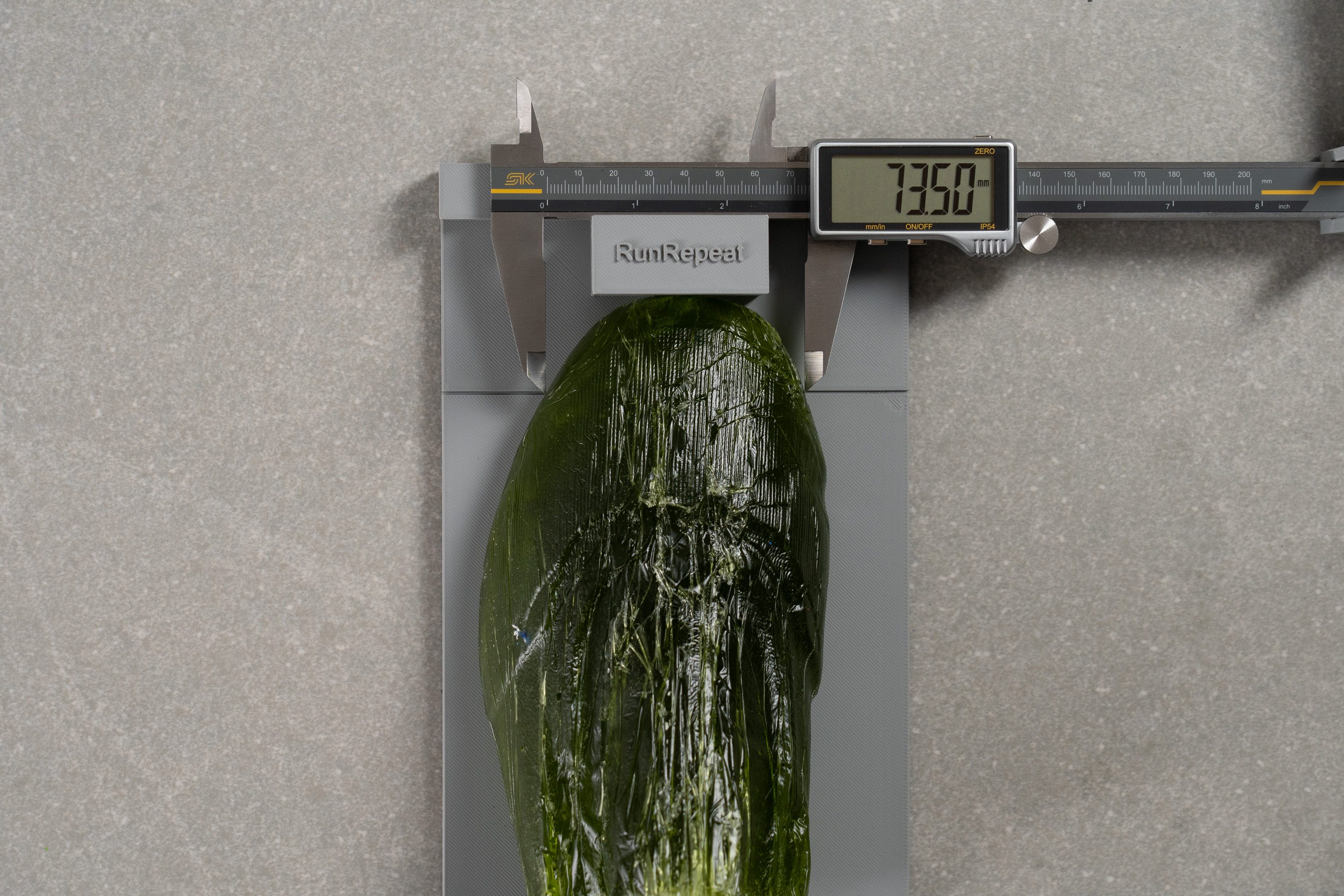
| Wave Inspire 21 | 73.5 mm |
| Average | 73.3 mm |
Toebox height
We finished the trifecta of measurements regarding fit with the toebox height.
There’s plenty of upward space with a vertical clearance of 30.9 mm, a design ideal for runners who hate pressure, especially around the big toenail.
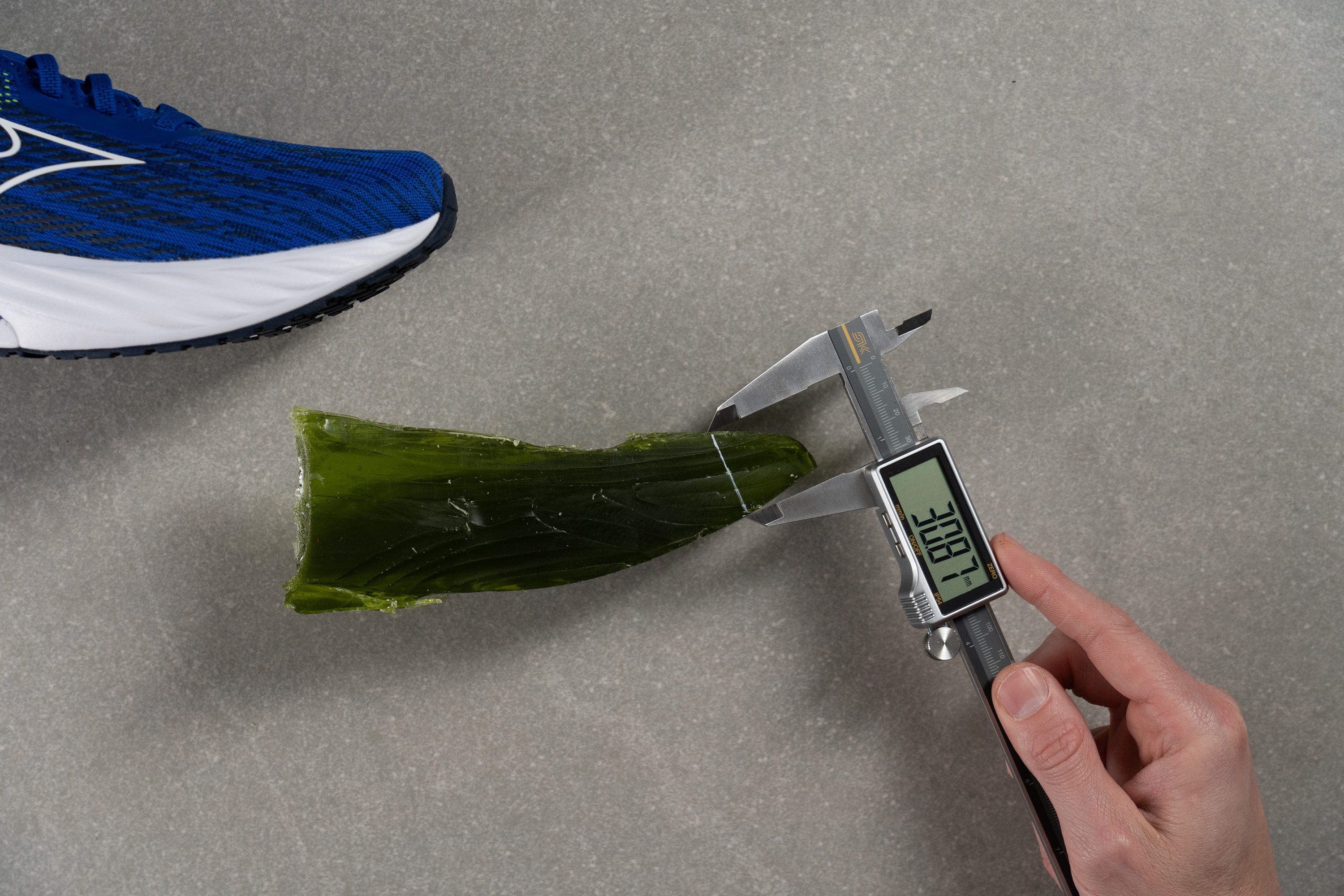
| Wave Inspire 21 | 30.9 mm |
| Average | 27.1 mm |
Traction / Grip
Traction test
Whether the roads are dry or wet from yesterday's rain, you can rely on the Wave Inspire 21 for great grip on both.
To mimic running on wet road, we applied a force of 500N to the shoe's forefoot (because that's where the push-off happens) at a 7-degree angle. Brushing the shoe's outsole against a slab of wet concrete, we recorded a solid friction score of 0.50. This is a solid result for a road running shoe.
| Wave Inspire 21 | 0.50 |
| Average | 0.47 |
Outsole design
The X10 outsole features full-length rubber coverage in a segmented layout. The forefoot and rearfoot include diagonal lugs separated by thin flex grooves. A deep central channel runs from heel to midfoot, aiding compression and movement plus exposing the blue Wave Plate.
For those seeking durability, this is a great option, as most brands are reducing outsole coverage. However, it will likely take a toll on weight.
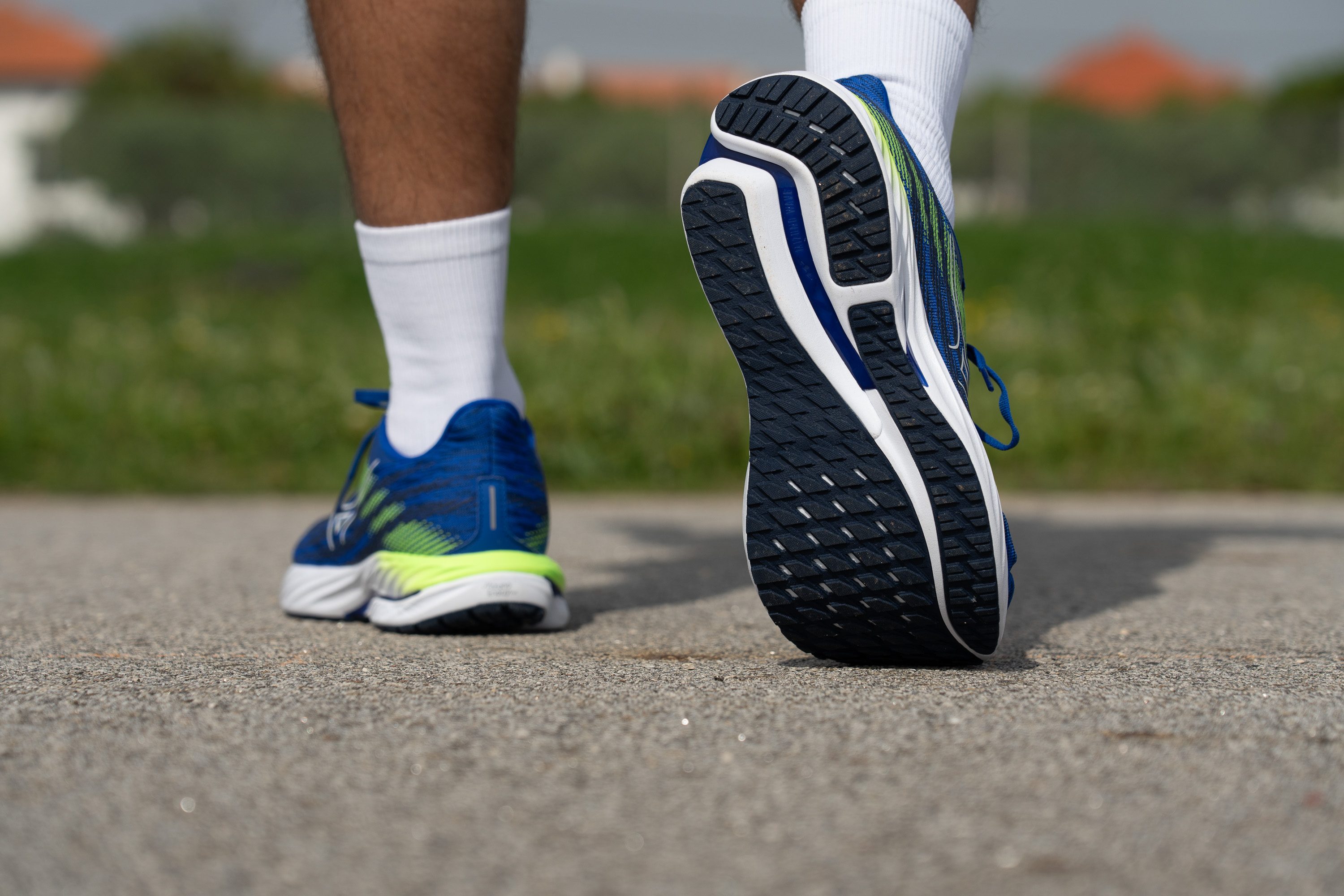
Flexibility / Stiffness
Any shoe aiming for all-day versatility needs a bit of flex—otherwise, it won’t feel right for hitting that 10K steps goal around town. Luckily, thanks to its short-length Wave Plate, the Mizuno Wave Inspire 21 delivers with a 14.5N result in our bend test.
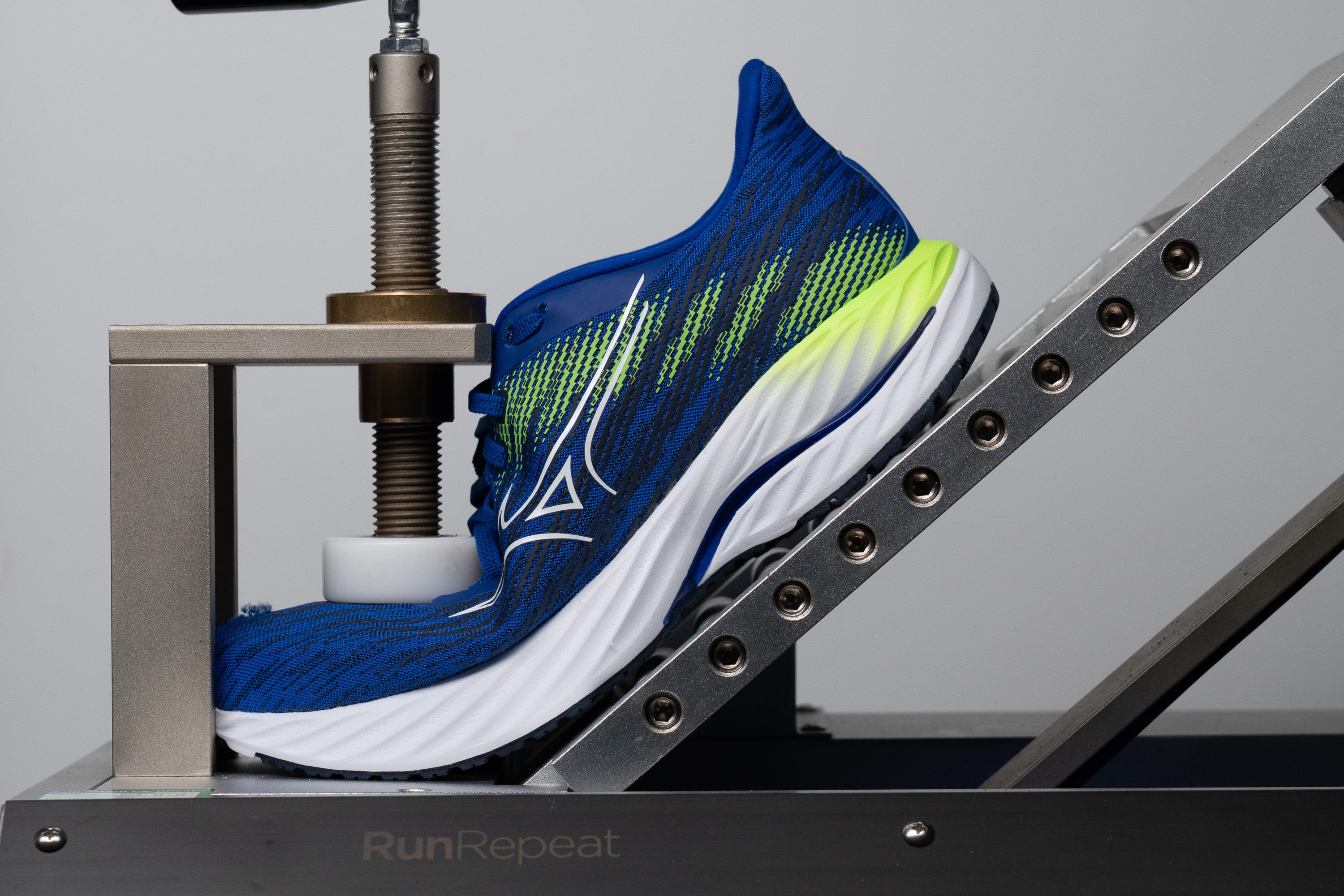
| Wave Inspire 21 | 14.5N |
| Average | 15.2N |
Weight
One thing that really stands out while running in the Wave Inspire 21 is that it doesn’t feel lightweight at all—mainly because of its full-length rubber coverage. Still, its 10.1 oz (286g) isn’t bad at all, showing a 5% improvement over its predecessor and closing the gap to the average.

| Wave Inspire 21 | 10.1 oz (286g) |
| Average | 9.3 oz (265g) |
Breathability
Instead of using a classic engineered mesh, Mizuno went with a jacquard mesh that doesn’t feature any large ventilation holes. That immediately raised questions for us about how breathable this shoe would be.
To get a clear answer, we used our smoke machine and, unfortunately, the result was slightly below expectations. It scored a 3/5, which isn’t a major issue for most runners, but we were hoping for stronger airflow.
We then placed the upper over a bright light and quickly noticed that there wasn’t much space for air to escape. Because of this, we believe it might get a bit warm on heat-wave summer days.

The upper feels solid and the material is comfortable against the foot, yet the micro-openings we spotted under our microscope appear too small to truly help with ventilation.
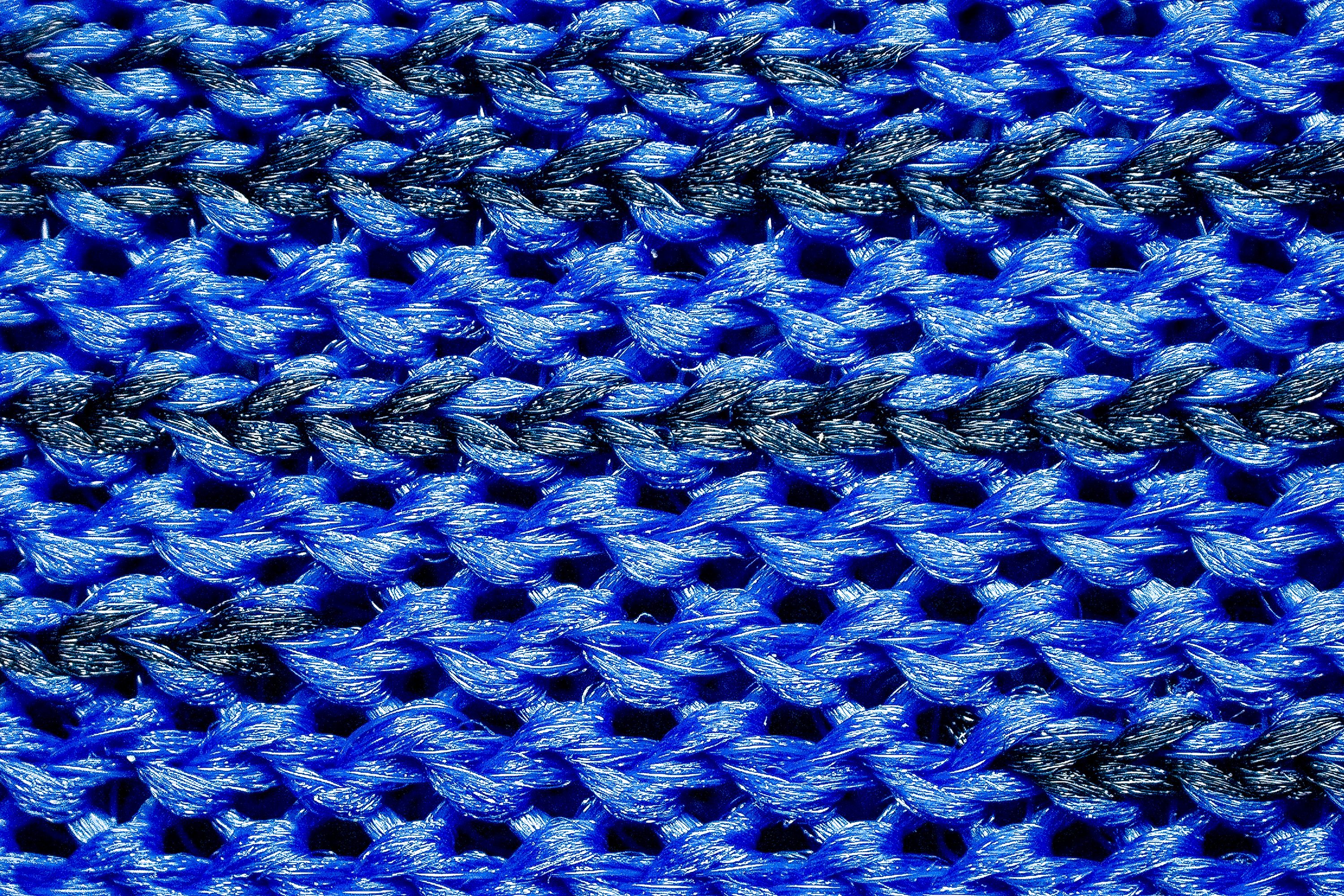
We also checked the padding. There’s a satisfying amount in both the tongue and heel, giving the shoe a soft-cushioned feel.
| Wave Inspire 21 | 3 |
| Average | 3.7 |
Stability
Lateral stability test
During our test runs, we discovered that the WI21 delivered is stable as a table—especially for heel-first landings. Rather than relying on old-school stability elements like firmer inserts, Mizuno used its signature Wave Plate, which adds structure without making the shoe overly stiff.
Torsional rigidity
Indeed, we twisted the Wave Inspire 21 and measured a 3/5 torsional rigidity—more in line with neutral daily trainers than stability models. Mizuno achieved this by using a heel-only plate, keeping the rest of the shoe pleasantly flexible.
| Wave Inspire 21 | 3 |
| Average | 3.5 |
Heel counter stiffness
The heel counter leans closer to classic stability designs with a firm 4/5 rating. It’s not uncomfortable thanks to the generous padding, but runners who prefer highly-flexible heel counters might find it a bit too rigid.
| Wave Inspire 21 | 4 |
| Average | 2.9 |
Midsole width - forefoot
One simple way to enhance stability is by widening the midsole, giving the foot a more grounded feel on each landing. That’s exactly what Mizuno did with the Wave Inspire 21, reaching a broad 118.1 mm in the forefoot.
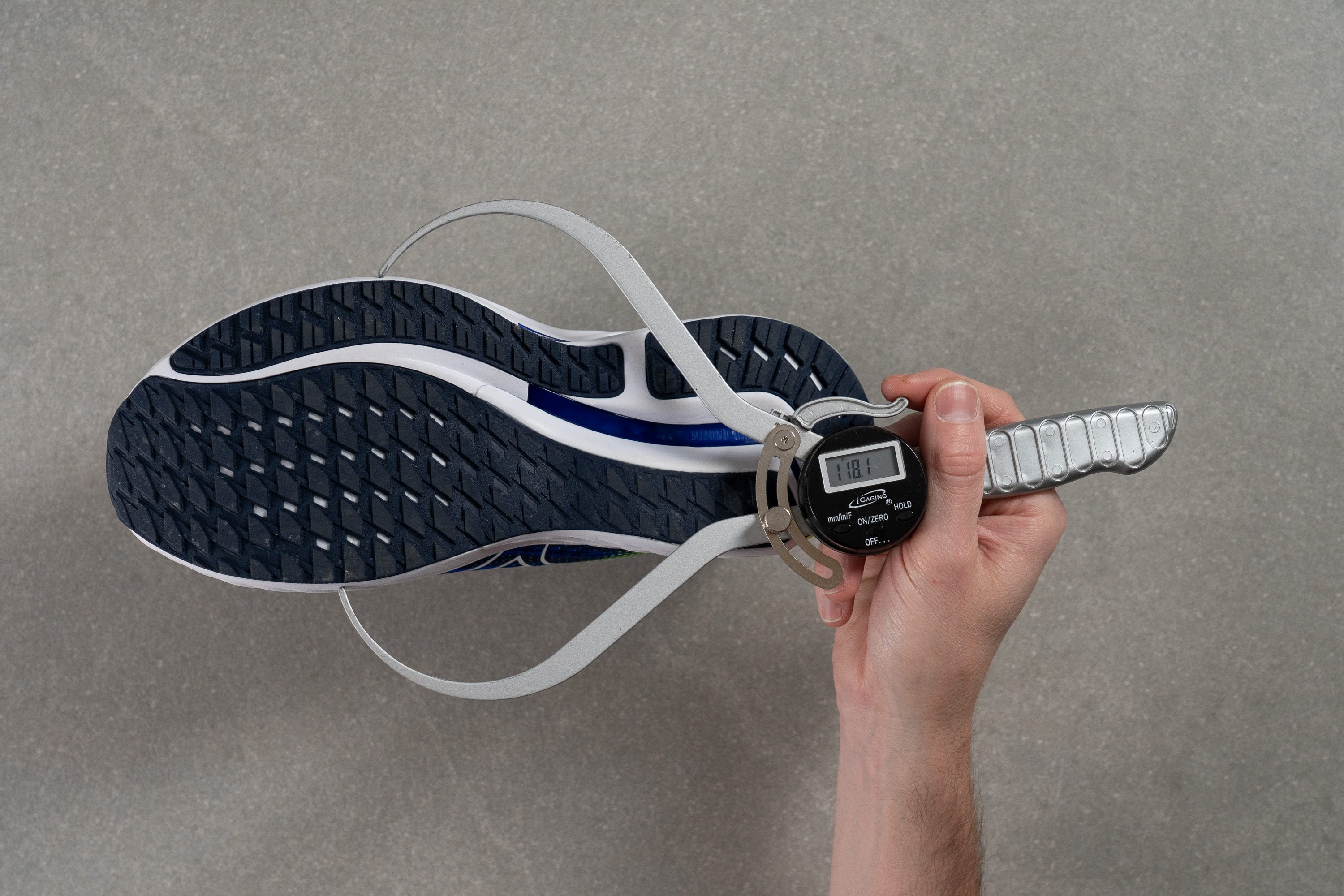
| Wave Inspire 21 | 118.1 mm |
| Average | 114.3 mm |
Midsole width - heel
The same design logic applies to the heel, which measures a generous 94.0 mm—clearly wider than average. This was key, as we believe that 9 out of 10 runners using this shoe will be landing on their heels.
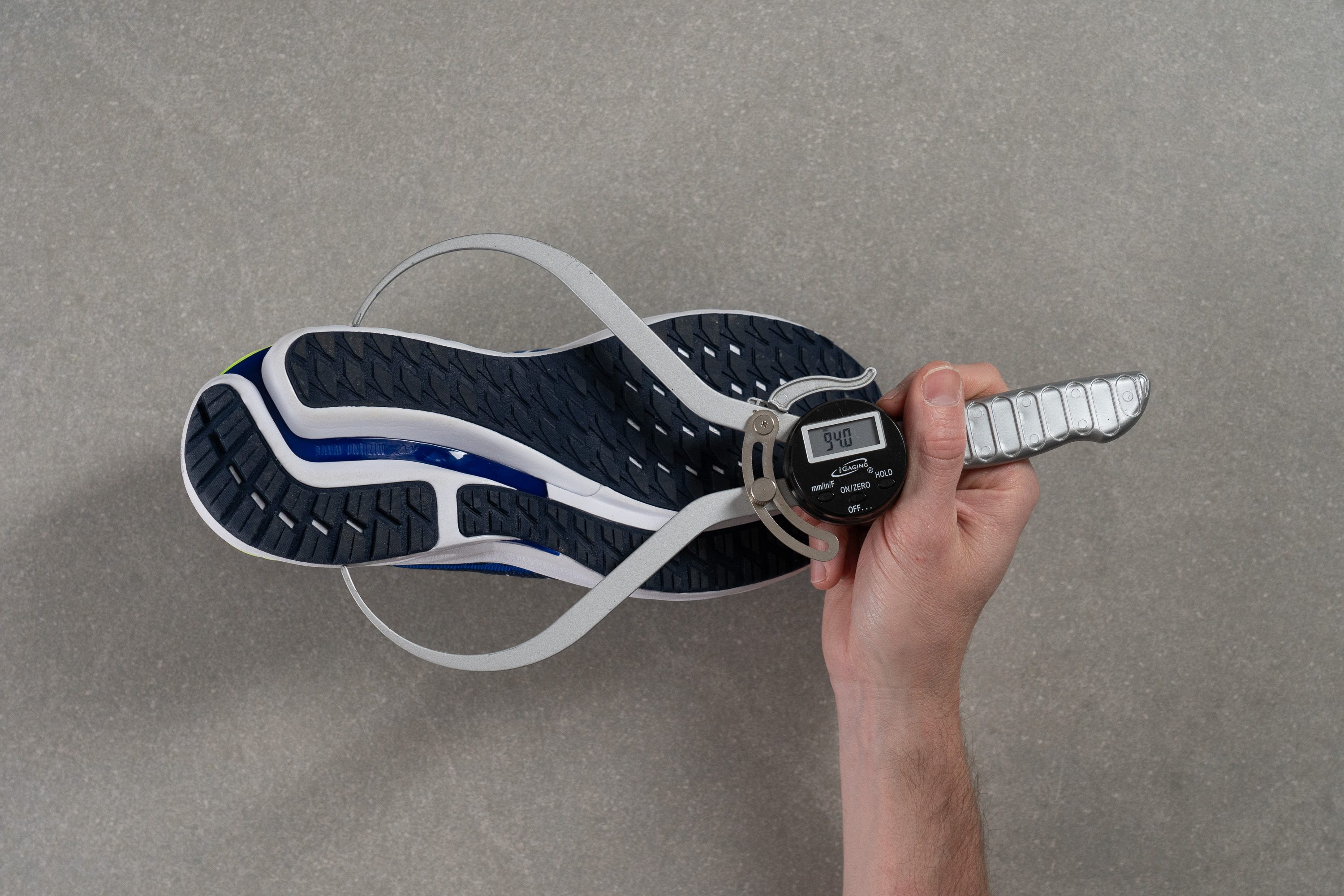
| Wave Inspire 21 | 94.0 mm |
| Average | 90.7 mm |
Durability
Toebox durability
The absence of large ventilation holes turned out to be an advantage in our Dremel-based durability test, as we gave the Wave Inspire 21 a 3/5. It’s not an award-winning result, but still solid for everyday miles.
| Wave Inspire 21 | 3 |
| Average | 2.6 |
Heel padding durability
The same story unfolded with the heel padding durability—this Mizuno outperformed the average and earned a solid 4/5. Once again, there’s no reason to be concerned about early signs of wear.
| Wave Inspire 21 | 4 |
| Average | 3.4 |
Outsole durability
We were also pleased with the outcome when we tested the outsole using the Dremel: only 0.9 mm of damage. Staying below 1.0 mm usually means there's enough durability, especially for a shoe with generous coverage.
| Wave Inspire 21 | 0.9 mm |
| Average | 1.1 mm |
Outsole thickness
To be absolutely sure the Wave Inspire 21 holds up over time, Mizuno added 4.5 mm of rubber beneath the foam. For us, that feels a bit much—this shoe already leans heavy, and something closer to 3 or 3.5 mm would've struck a more reasonable balance.
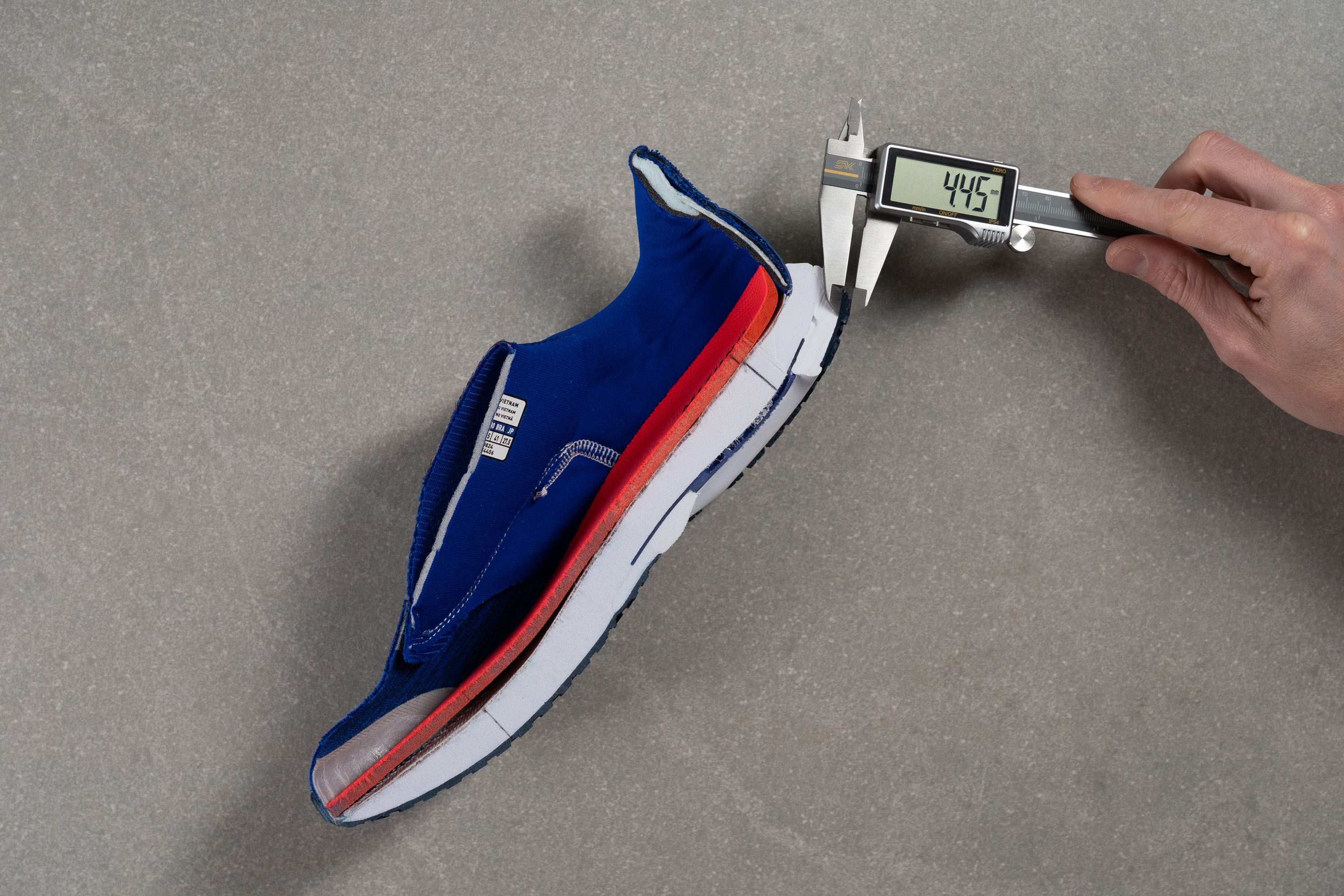
| Wave Inspire 21 | 4.5 mm |
| Average | 3.2 mm |
Misc
Insole thickness
We found that Mizuno added a 5.4 mm EVA-based plush insole to boost the cushioning in the Wave Inspire 21.
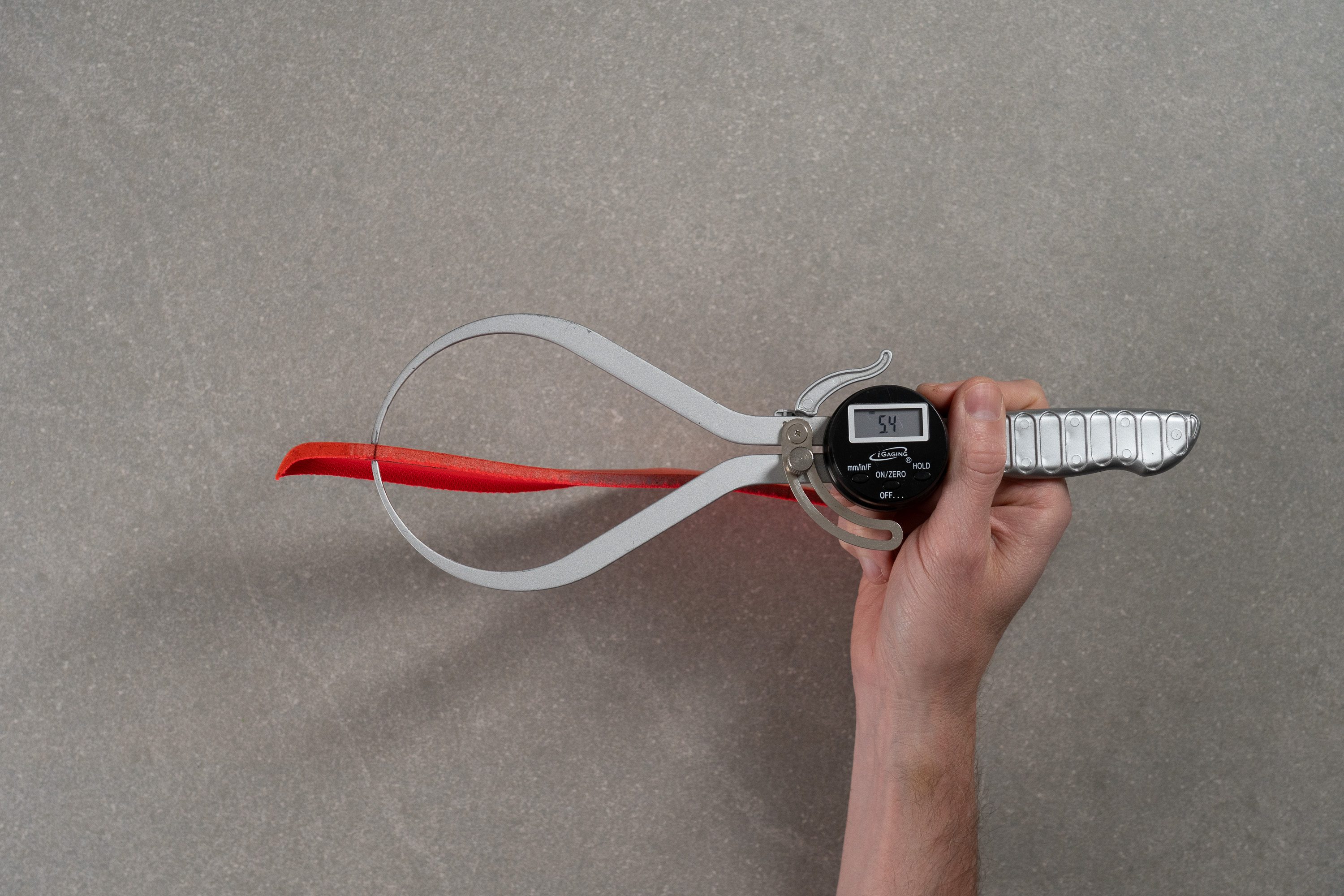
| Wave Inspire 21 | 5.4 mm |
| Average | 4.5 mm |
Removable insole
The stock insole removes effortlessly, making it easy to replace with your favorite insert. There’s enough space in the upper to accommodate most alternatives without causing any tightness.

| Wave Inspire 21 | Yes |
Midsole softness in cold (%)
We put the Wave Inspire 21 next to our mochi ice creams for 20 minutes and found that it got 19% firmer. Not a bad outcome!

| Wave Inspire 21 | 19% |
| Average | 25% |
Reflective elements
We found a few small reflective elements on the upper, but we believe Mizuno could step it up with a more hi-vis design.
| Wave Inspire 21 | Yes |
Tongue padding
The lacing system on the Wave Inspire 21 reflects a no-nonsense approach with simple punched eyelets and flat shoelaces deliver a secure fit without gimmicks.
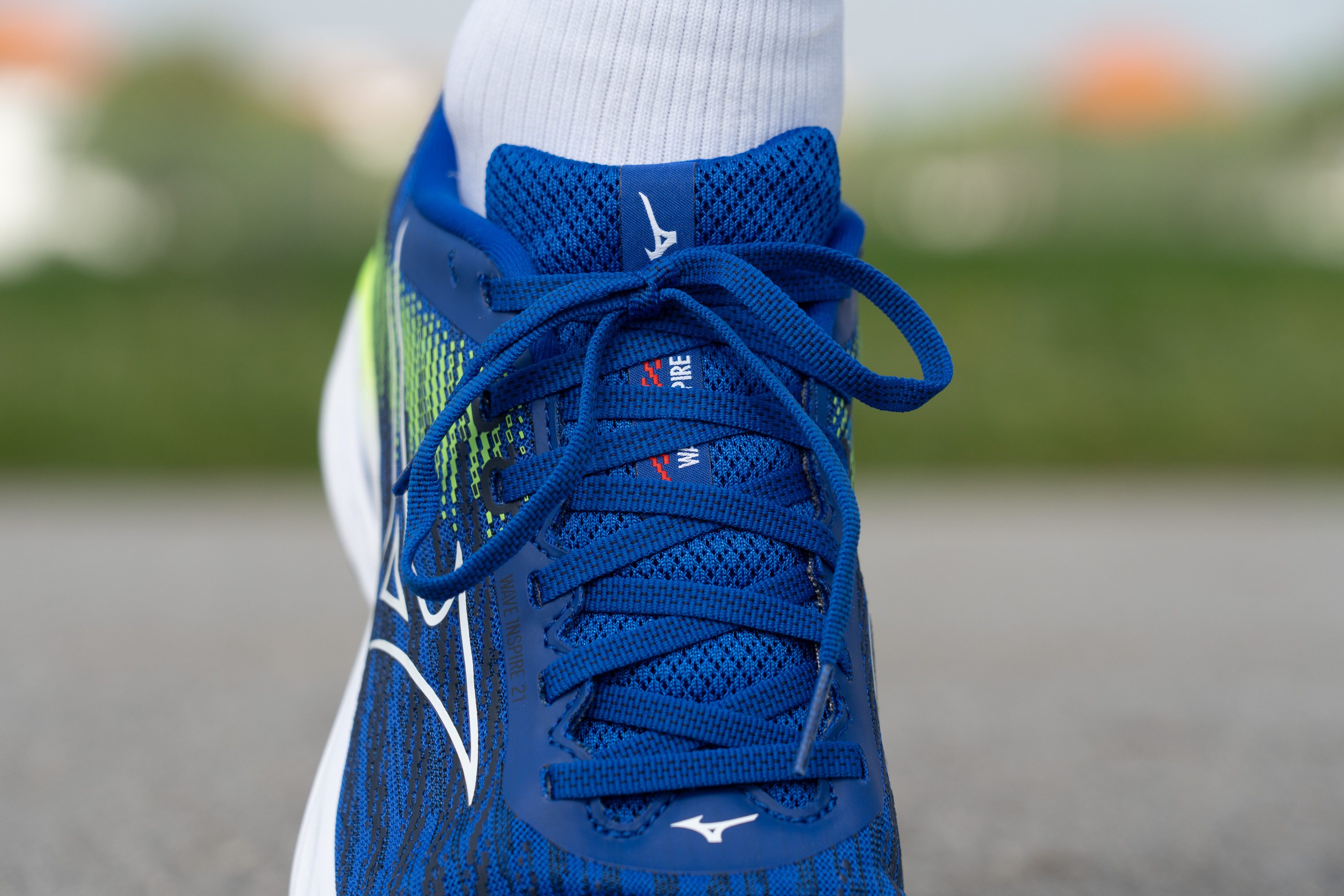
The tongue keeps the same structure from the previous version with 6.9 mm of padding, and we understand why. We tested it and found that it offers a confident lockdown without resorting to a super-thick, overcushioned slab that might feel plush at first but often overwhelms later.
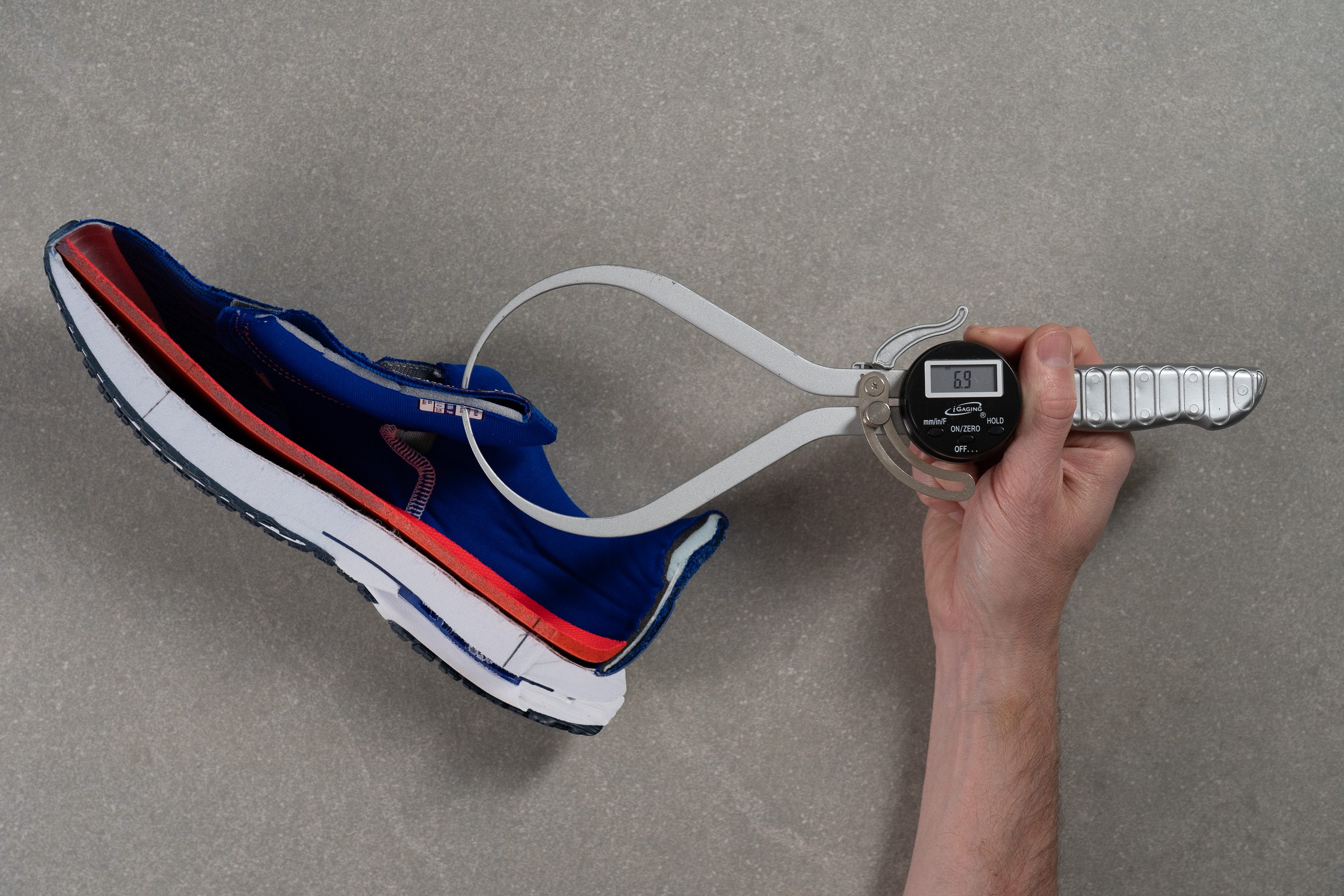
| Wave Inspire 21 | 6.9 mm |
| Average | 5.8 mm |
Tongue: gusset type
The tongue is partially fixed to the sides—just enough to enhance the lockdown with a more secure, movement-free feel.

| Wave Inspire 21 | Both sides (semi) |
Price
The market is red-hot right now, and any overpriced daily trainer usually struggles to sell. That’s why we found that the Wave Inspire 21 held its ground without a price bump, maintaining a value-focused position.
| Wave Inspire 21 | $140 |
| Average | $152 |
Heel tab
The heel tab uses a tall, pull-friendly collar—similar to what we’ve seen in some Hoka models—which can be easily grabbed to help slide your foot in with less effort.
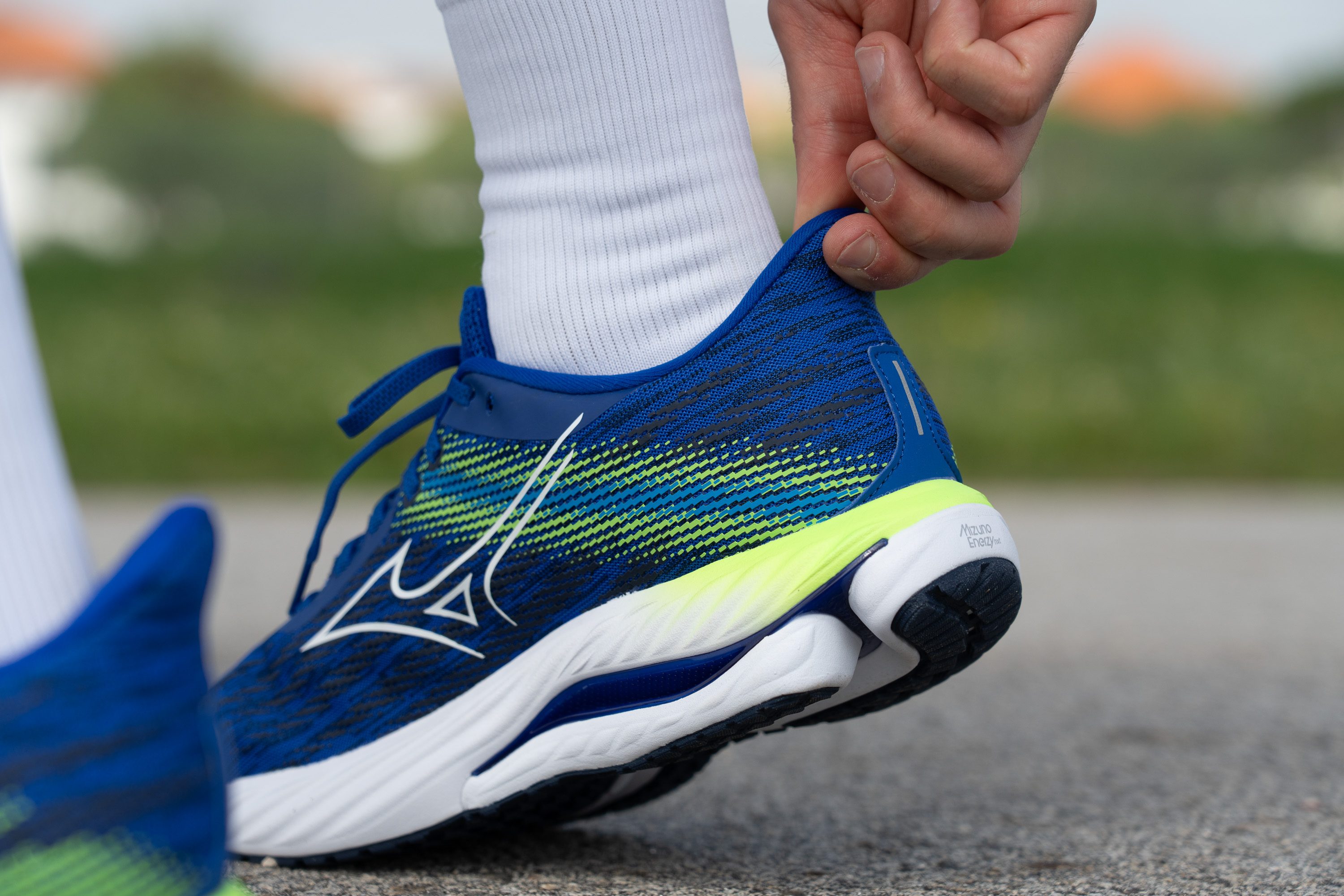
| Wave Inspire 21 | Extended heel collar |

